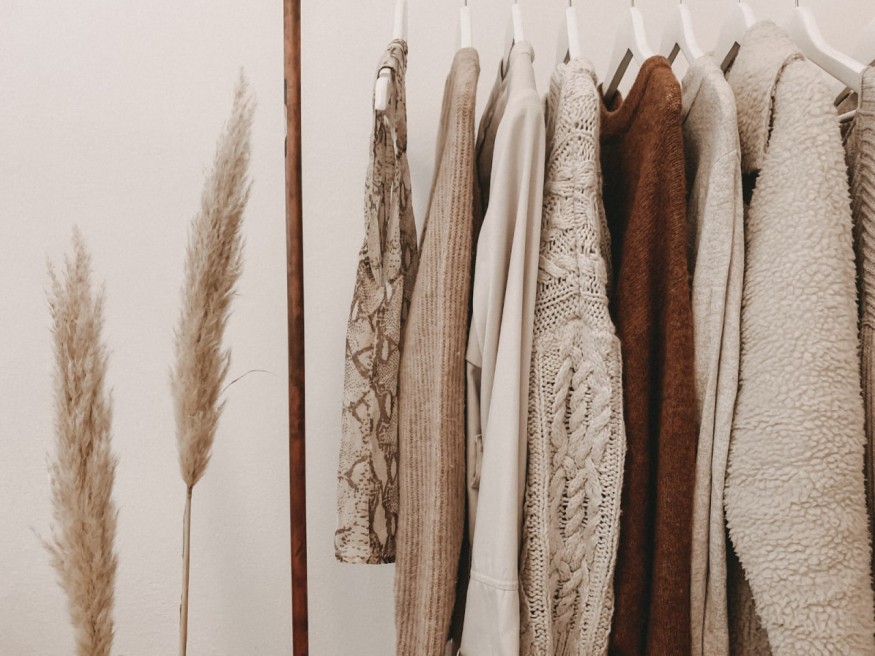Could The Cost-Of-Living Crisis Influence A Future Of Upcycled Fashion?

The cost-of-living crisis has become an inescapable challenge for people all over the UK. After new reports found that the average woker's pay packet fell by 4.6% in just the first few months of 2023, it's no wonder that we're constantly searching for new ways to save money.
In fact, a whopping 83% of british consumers have altered their spending habits in the last 12 months in order to address a dip in capital income. As energy bills rise, luxuries have been thrown out of the window.
One area in particular that has seen a significant shift in consumer attention is the clothing industry. Many high street shoppers simply can't afford to buy 'new' in 2023, especially as popular outlets like H&M and Zara raise their prices.
Instead, a new era of upcycling and thrifting is on the rise. Have charity shops become the new fashionable outlets? Could Vinted become a keyplayer in the online clothing industry? Let's have a closer look at what the year has in store for a cost-of-living inspired clothing market.
Buying clothes in a cost-of-living crisis
It's no secret that inflation has had a significant impact on the fashion industry, however, it's not altering spending habits in the way you might expect.
Instead of encouraging an era of fast, inexpensive fashion, experts are suggesting that purchasing higher quality, sustainable goods could be the key to saving money on clothing.
"I think when we when we consider the cost of living crisis and fashion, it's not just the purchasing of fashion. It's the care, it's the maintenance," says Northumbria School of Design's Dr. Alana James. "I would personally always suggest that individuals pay a slightly higher price for clothing. I'm not talking about splashing out on really luxurious items, but to buy the best quality that you can afford."
The rise of sustainable shopping
According to a report from First Insight, 58% of consumers are now prepared to pay more for sustainable, high quality goods in 2023.
Not only are Gen Z and Millennial customers more concerned about ethical sourcing and their carbon footprint, but they are willing to fork out more money on capsule wardrobe staples, thanks to TikTok and Instagram influencers bringing minimalistic style back into the mainstream.
Younger consumers are also twice as likely to purchase products second hand. Not only are you more likely to find a designer brand for less on second hand marketplaces such as Vinted, but finding trending pieces for less is a great way embrace fast-fashion trends in way that saves your pocket and the planet.
Did you know that one in three UK adults now belive that charity shops are more important post-Covid? Not only do they fund charitable services, but they are the perfect solution for consumers feeling the pinch of the cost-of-living crisis.
Better still, second hand marketplaces like Vinted have only fueled the upcycling movement. As the perfect place to thrift new items, or sell old garments that can be reimagined, it's no wonder that the Lithuania-founded company was recently valued at £4.5 billion.
While second hand clothing only makes up 3-4% of the complete apparel market, Vinted's CEO, Thomas Plantenga believes that the cost-of-living crisis could push younger consumers to choose secondhand, first.
"Second-hand is still a drop in the ocean," says Plantenga. "Everybody is helping to develop the market. The space is so big. What we see as the challenge is to convert people to a mindset to first look at second-hand before looking at new."
A future of upcycling online
As we step into future of more cash crunching, upcycling has become the next biggest hit in the online world. Online consumers want to see more from their favourite brands when it comes to sustainability and affordability, so it's no wonder that they are taking matters into their own hands on social media.
Not only do people want to get more out of their current clothes, they are much more likely to turn to thrifting and secondhand shopping to acquire new pieces.

Social media is also playing a large role in the fashion industry's newest sustainable movement. As video apps like TikTok rake in over 8 billion views on hashtags such as #Upcycling alone, embracing sustainable fashion habits has become something of a trend for Gen Z consumers.
Upcycling influencer, Arielle Sidney is just one example of an social media famous trend leader. Showcasing her upcycled clothing creations, she's inspired 11.5K followers to do the same thing as a way to save money in 2023.
"Pre-pandemic, I would thrift a lot, especially every time I visited a new city so I could find memorable pieces to have as keepsakes," she told Euronews. "But once I started sewing, I realised I could make my own cool, unique pieces and not break the bank. That's what I've been doing since 2020."
While prices may be rising, she is just one voice encouraging a new era of sustainable shopping and staying on top of fashion trends for less.
Subscribe to Latin Post!
Sign up for our free newsletter for the Latest coverage!
© 2026 Latin Post. All rights reserved. Do not reproduce without permission.















